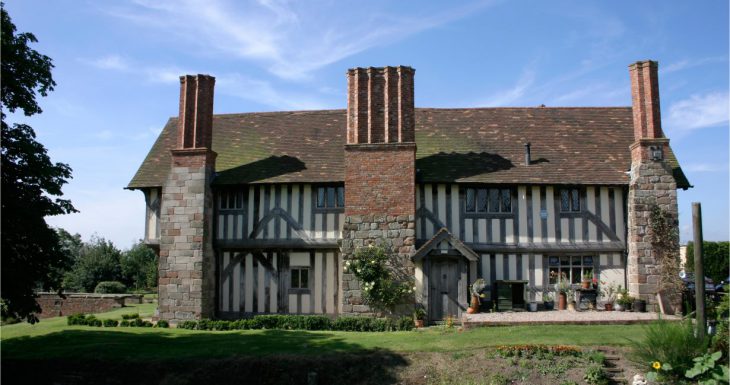
Sinai Park House
Subject to a massive restoration effort after decades of neglect, a large timber-framed manor house being brought back to life.
Off Shobnall Road, Burton-on-Trent, Staffordshire, DE13 0QJ

- Accessible parking
- Accessible toilets
- Guide dogs welcome
The Sinai site was always of strategic importance, with commanding views over the north/south crossing point over the Trent. For Romans, it was an ideal outpost – a day’s march via Rykneld Street to Derby or Lichfield. In Medieval times, it was the fortified manor of the de Schobenhale family with its 13th-century hilltop moat (now an ancient monument).
The de Schobenhales gave Sinai Park to the monks of Burton Abbey and in 1334, Abbot William Bromley “gave five days indulgence from the blood-letting… in that place surrounded by a dyke in the park of Shopenhale with an increased allowance of bread and beer.” The monks were responsible for bringing two timber houses to the site – now the two wings of the present building – to use for rest and recuperation after bloodletting. The monks also built up the deer park for hunting.
At the Dissolution, Sinai was acquired by William Paget, the first Baron of Beaudesert and one of Henry VIII’s chief ministers. The Paget family continued to own Sinai for almost 400 years. Sinai was never the Pagets main house, these being the manor in Burton, their country house at Beaudesert and eventually their grand new home in Anglesey, Plas Newydd, designed in the 18th century by James Wyatt. Sinai was used as a hunting lodge.
- Accessible parking
- Accessible toilets
- Guide dogs welcome
